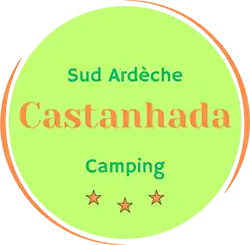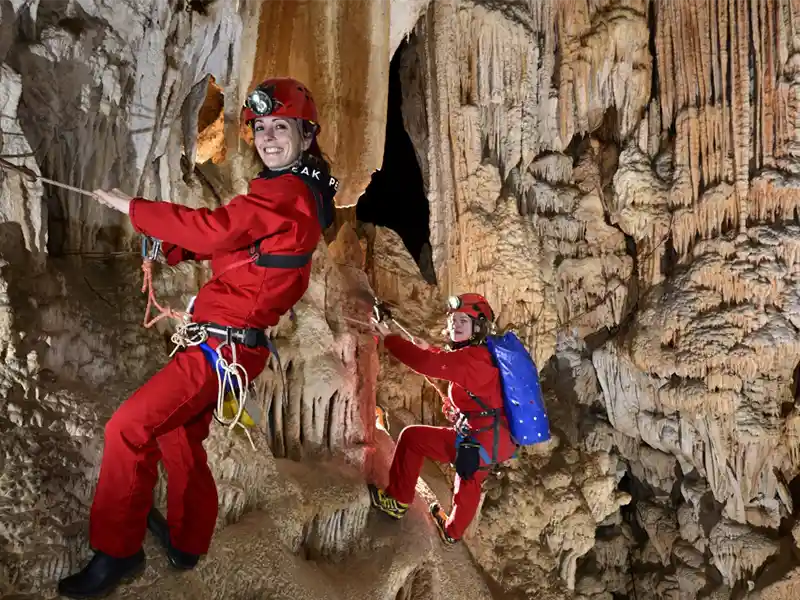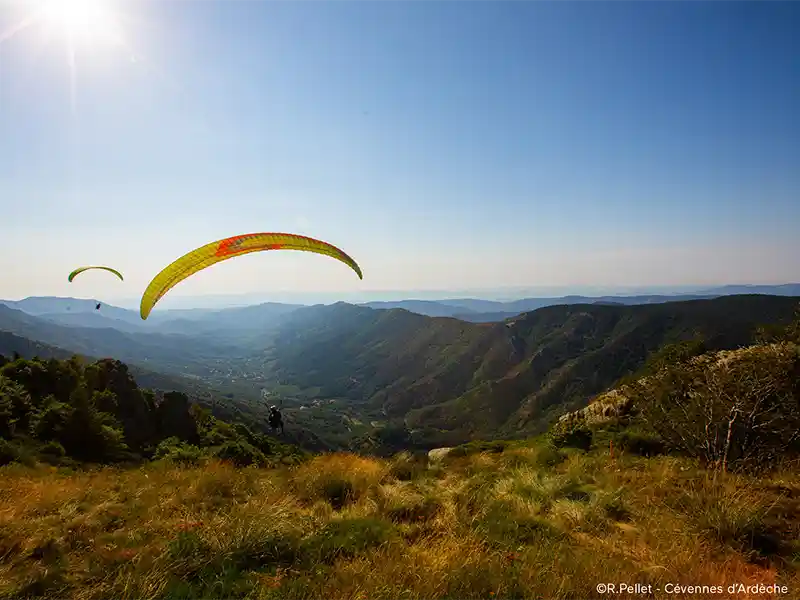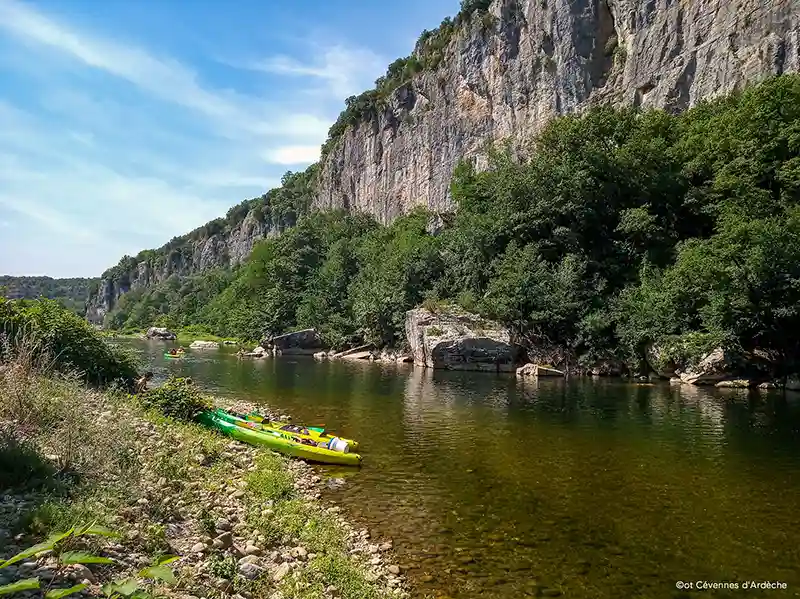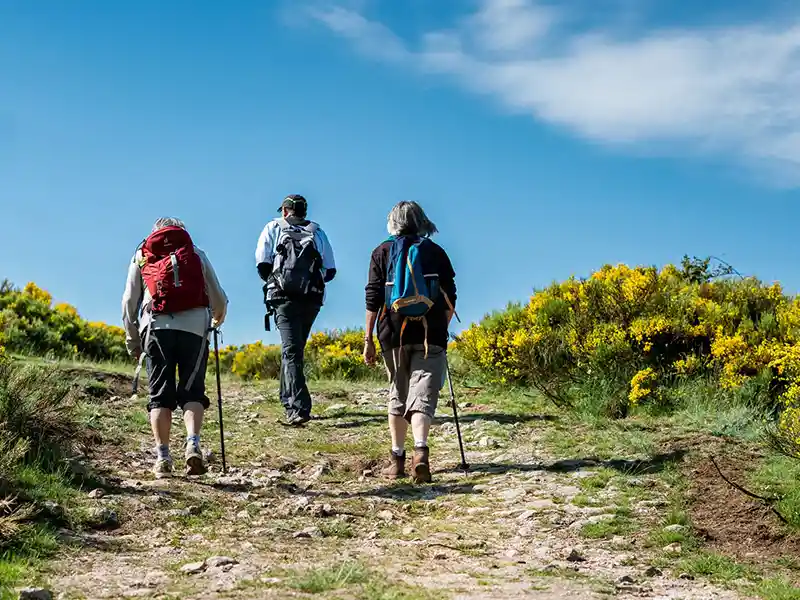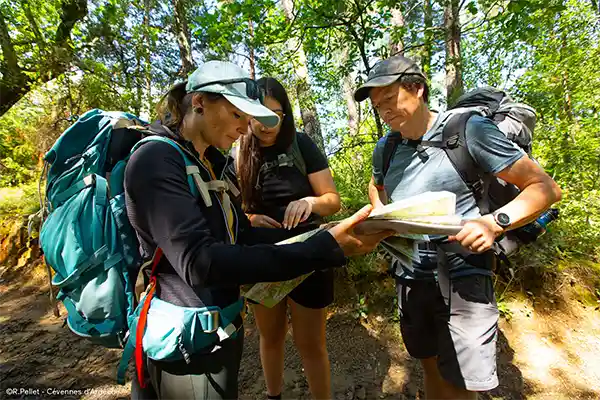
Follow the guide...
Sports Activities IN ARDÈCHE
NEAR THE CAMPSITE
The 3-star Castanhada campsite in southern Ardèche is located 500 metres from the Chassezac River, where you can enjoy a moment of pure relaxation canoeing through the gorges and swimming spots such as the Pont du Nassier (3 km).
Walks and trails AROUND THE CAMPSITE
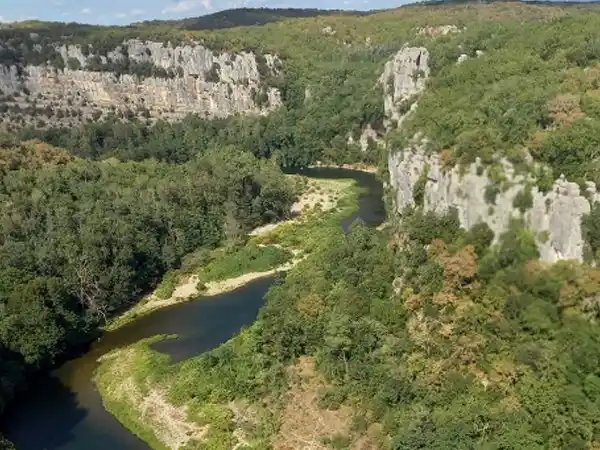
Bois de Païolive
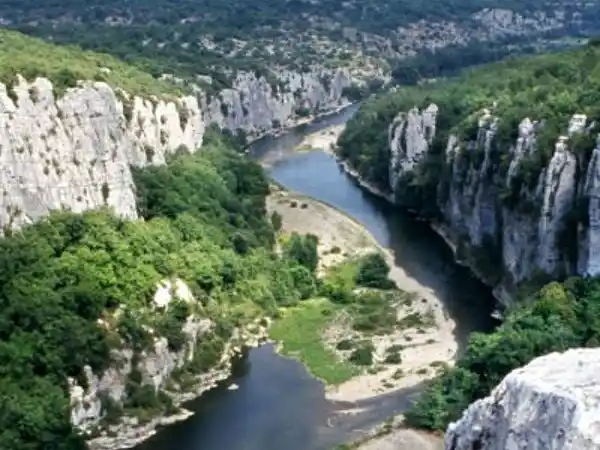
Cevennes and Chassezac Valley
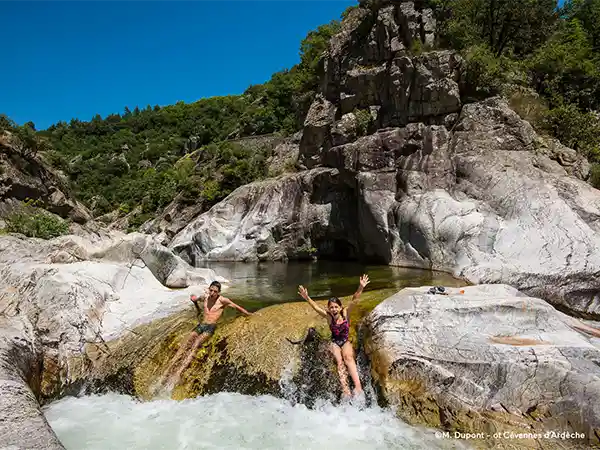
Lagorce and the Gour de la Sompe
THE Caves
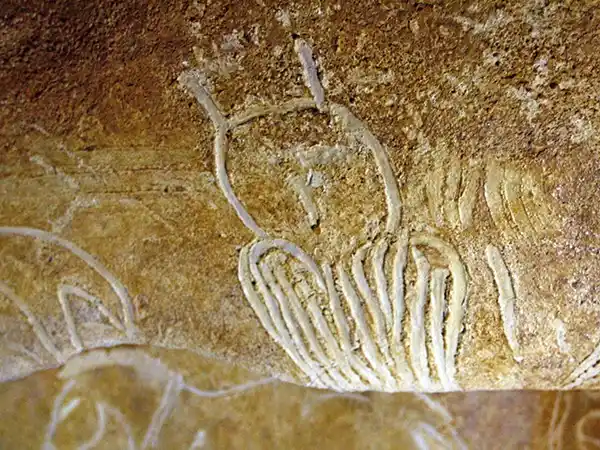
The Grotte Chauvet 2
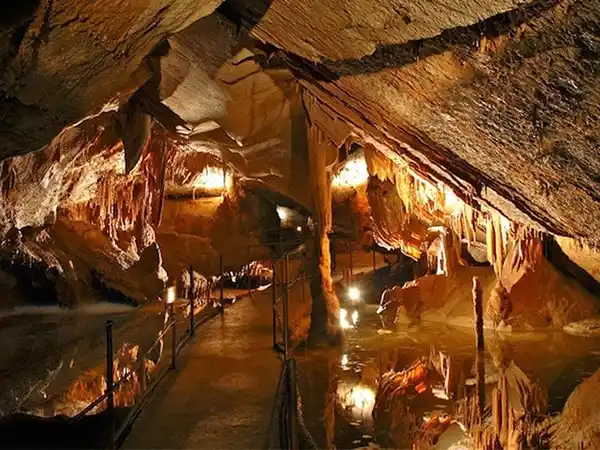
The Grotte de la Cocalière
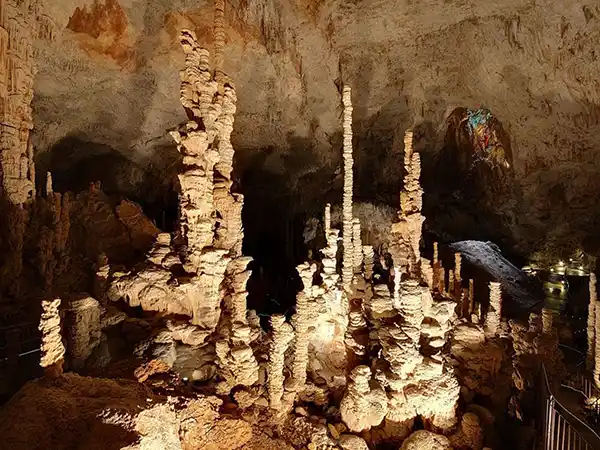
L'Aven d'Orgnac
Towns and villages OF CHARACTER IN ARDÈCHE
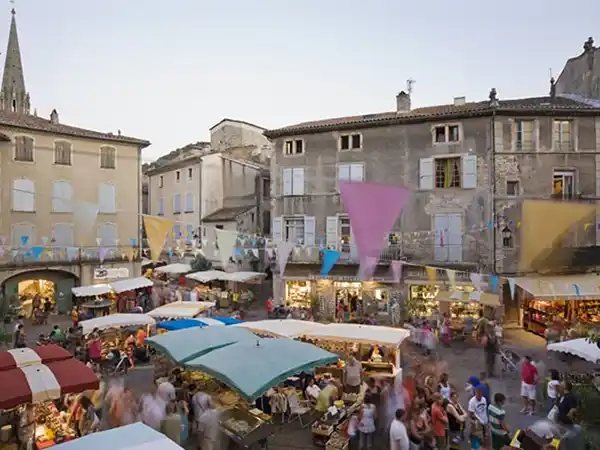
Les Vans
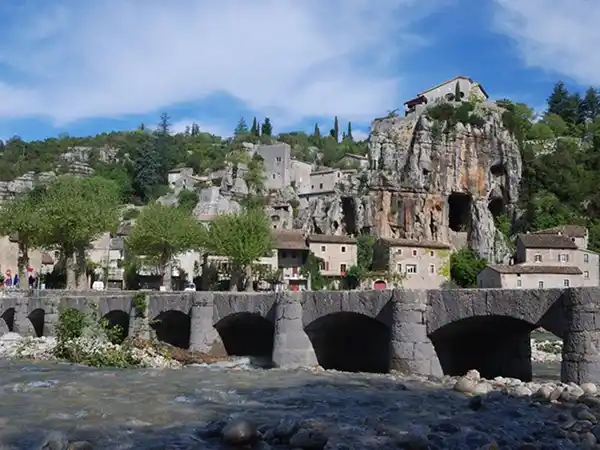
Labeaume
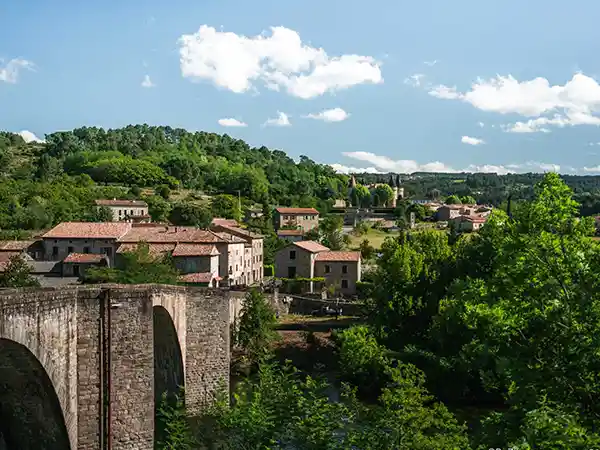
Chambonas
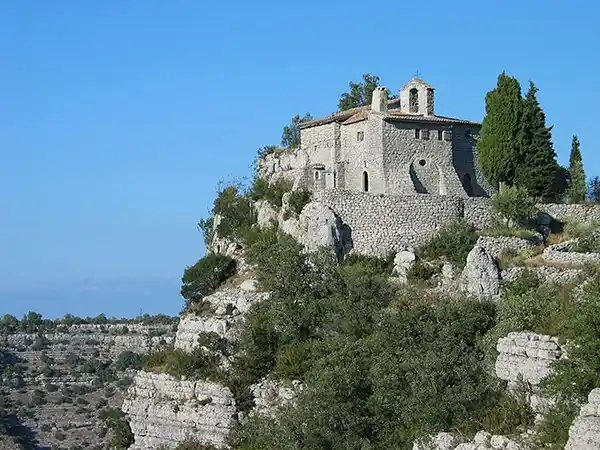
Chassagne
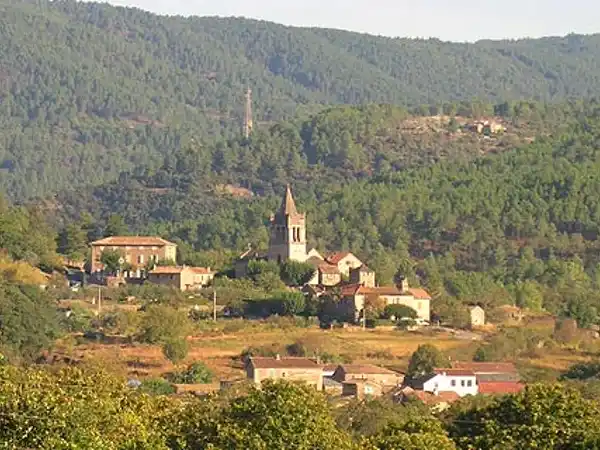
Gravières
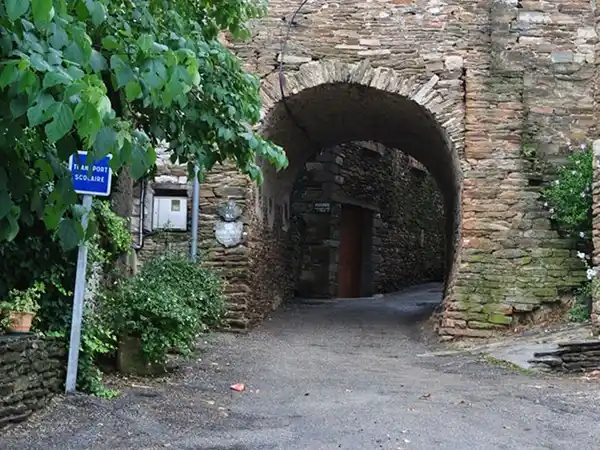
Brahic
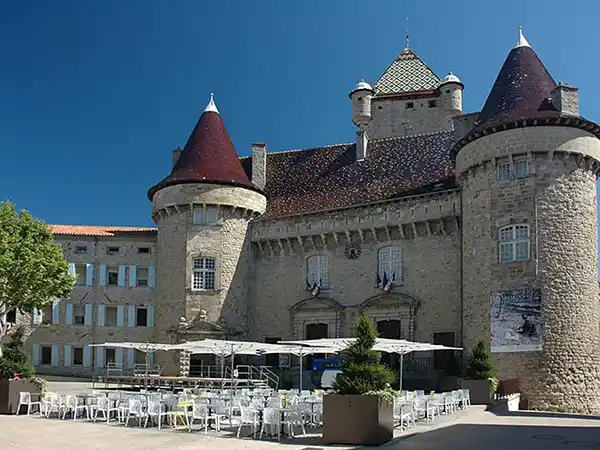
Aubenas
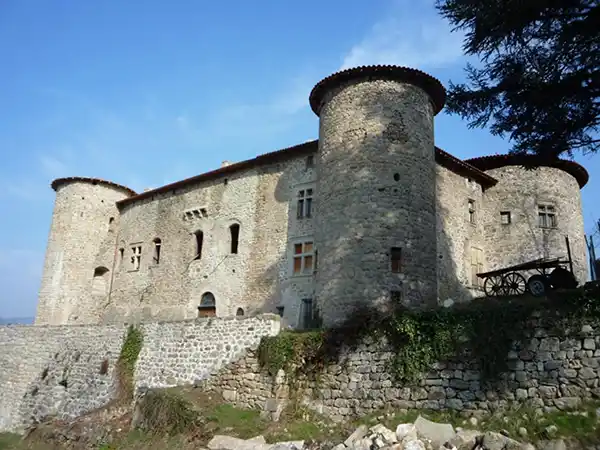
Berrias et Casteljau
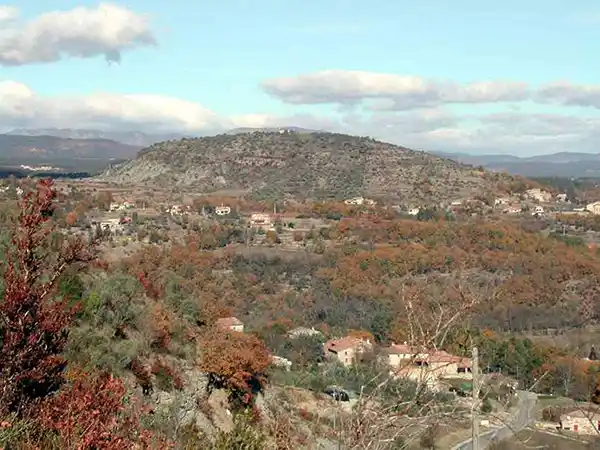
Les Assions
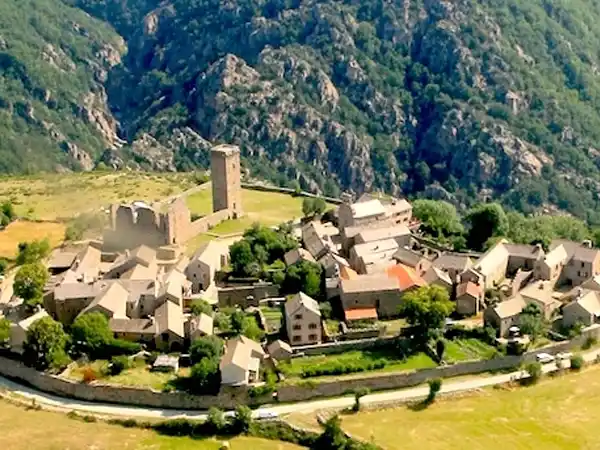
La Garde Guerin
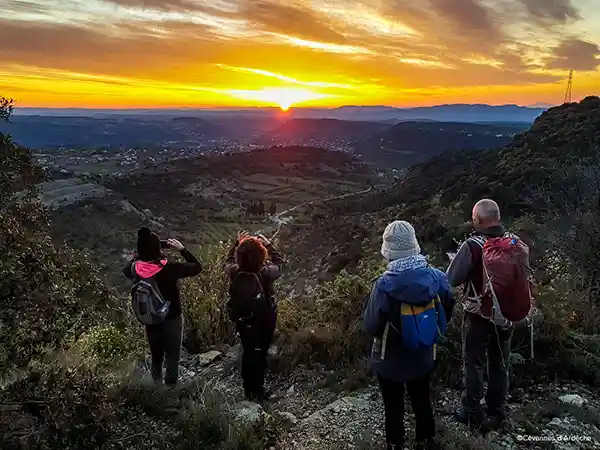
Naves

Balazuc
Bois de Païolive
The Bois de Païolive lined with hiking trails is a 16 km² forest located 5 minutes away, where white oaks grow among limestone rocks of various shapes.
This limestone massif was formed 150 million years ago through marine sedimentation.
Today, erosion, caused by the Chassezac river, snow, and ice (the lapiaz phenomenon), has created deep faults, grooves, and fissures, forming a complex of natural labyrinths with numerous hiking trails
Cevennes and Chassezac Valley
A circuit starting from Camping Castanhada (Les Vans, Southern Ardèche) allows visitors to discover the richness of the Cévennes and the Chassezac Valley.
- Les Vans : This village, strategically located between the Cévennes and Monts d'Ardèche Parks, boasts a rich architectural heritage: rampart remains, the Porte de l'Oie, a 17th-century church with an exceptional altarpiece, old Cévennes houses, and a Protestant temple. It hosts a weekly market (Saturday morning).
- Banne : A classified medieval village and former mining town, it is split between the ruined old castle and the church. It is characterized by its interwoven narrow streets and stone walls. Visitors can see the Museum of Decorated Eggs and Icons there.
- Bois de Païolive : A stop is suggested in this remarkable natural area, known for its ancient oaks and its "mineral chaos" of limestone rocks sculpted by erosion.
- Berrias-et-Casteljau : A commune traversed by the Chassezac, it is home to the magnificent Commanderie de Jalès (an former Knights Templar building) and the 13th-century Château de Casteljau, now a holiday centre, situated in a meander of the Chassezac.
- Beaulieu : This village is a major archaeological site, featuring no fewer than 56 dolmens (including the Divols and Abrits dolmens) erected between the Stone Age and the Bronze Age. The village is ideal for relaxation with its numerous trails.
- Chassagnes : The return route passes through this hamlet where you can admire the 16th-century castle (with a glazed tile roof), facing the Saint-Eugène hermitage.
Lagorce and the Gour de la Sompe
Located about thirty kilometers from the campsite, Lagorce is a small limestone village in the Bas-Vivarais region, near the Gorges de l'Ardèche.
The rough nature of its soil favours the presence of caves and explains the proximity of the spectacular Gour de la Sompe waterfall (at a place called Les Beaumes).
This waterfall, about twelve meters high, is fed by the waters of the Salastre, the Ibie, and the Sompe rivers.
Part of the Sompe flows underground, having created a unique double cirque where the two falls plunge, offering a particularly beautiful sight in spring and winter.
The Grotte Chauvet 2
Located 40 minutes away from the campsite Casthanada, near Vallon Pont d'Arc, the Grotte Chauvet 2 (Caverne du Pont d'Arc) is an identical reconstruction of the exceptional Chauvet Cave, a major site of parietal art (cave paintings).
Discovered in 1994, the original cave contains a thousand paintings (447 animal drawings) that are 360,000 years old, featuring highly advanced artistic techniques (perspective, shading). It is renowned for its aesthetic quality, the number of its works, and is the 39th site in France classified as a UNESCO World Heritage site.
The replica, "La Caverne du Pont d'Arc", a twin of the original has been built by a multidisciplinary team, faithfully reproduces the proportions, humidity, and sound atmosphere of the original, allowing visitors to explore the "first artistic gallery in history" and admire the works, before concluding with the Aurignacian Gallery (an interactive space about the prehistoric world).
The Grotte de la Cocalière
The Grotte de la Cocalière, 17 km from your campsite, located in Courry near the Cévennes National Park, is a vast underground network carved out over 135 million years ago.
- Discovery and Exploration: Discovered in 1854 and opened to the public in 1967, it is part of a network that is still largely unexplored (about 30 km). It has been listed as a UNESCO World Heritage site since 2011.
- The Visit: The one-kilometer visitor route lasts about an hour (with a constant temperature of 14°C) and is accessible to all.
- Formations (Concretions): The cave, nicknamed the "Diamond Cave" due to the sparkle of its calcite crystals, features rare and varied formations such as discs, thin draperies, eccentric crystals, and gours (clear water basins).
- Unique Feature: The return journey from the visit is made by a small train.
- Environment: The cave entrance is located on a karst plateau rich in garrigue (Mediterranean shrubland) and prehistoric remains (dolmens, tumuli), with a dedicated educational discovery trail.
L'Aven d'Orgnac
L'Aven d'Orgnac, a protected natural site revealed more than 90 years ago and located only 40 minutes away by car, promises an experience rich in discovery and sensations.
You will be able to :
- Take a guided tour of the Cave, taste wines underground, and even try your hand at caving (spelunking)!
- Discover prehistory within the Cité de la Préhistoire (City of Prehistory), including dedicated activities and temporary exhibitions.
- Outdoors, you will have the choice between a Treasure Hunt, hiking on the Sentier du Maubois trail, or simply relaxing at the picnic and play area.
The Aven d'Orgnac site has held the "Grand Site de France" label since 2004.
Les Vans
Les Vans is an Ardèche village (289 m in altitude) offering panoramic views and situated at the junction of the Monts d'Ardèche Regional Nature Park and the Cévennes National Park.
The village prospered in the 17th century thanks to mulberry cultivation and silk production, a success reflected in the beautiful residences of its historic centre. A statue of the famous local surgeon, Louis Ollier, stands there.
Its notable architectural heritage includes :
- The Saint Pierre Church (17th century) with an exceptional Baroque altarpiece and a heavy bell tower.
- A Protestant temple with columns, attesting to the local religious history.
- Three museums : the René Evesque Museum of France, the Léopold Ollier Museum, and the Maison de l'Olivier (House of the Olive Tree).
Other sites to visit are the Notre-Dame-de-Bon-Secours Basilica, the Château de la Saumès, a historic gate adorned with the Chanaleille coat of arms, as well as a megalithic bridge and dolmens.
Labeaume
Labeaume is an Ardèche village renowned for its Récatadou hanging gardens, laid out in terraces on and beneath the 50-metre limestone cliffs bordering the Labeaume river. These gardens were supplied by an ingenious hydraulic network carved into the rock (canals and gourgues [basins]).
The village also features numerous remnants of an ancestral past:
- Dolmens in the surrounding countryside.
- Typical rural elements: an old farm, an oil mill, clapas (piles of stones), and well-cisterns.
- The famous 11-arch submersible bridge of Labeaume.
- The church with its massive columned porch.
- The Place du Sablas (a Provençal gathering spot with terraces and a fountain under plane trees).
- Narrow alleyways, vaulted passages, and the castle.
Labeaume is one of the most charming villages in the Ardèche, to be visited from Camping Castanhada.
Book your mobile home, chalet, or pitch for a tent, caravan, or camper van in Southern Ardèche now.
Campsite near Labeaume.
Chambonas
Chambonas, located just 2 km from Les Vans, is a village with a remarkable historical heritage, characterized by its narrow streets and stone houses.
Its main attractions are:
- The Château: A magnificent private castle (not open to visitors) recognizable by its five round towers topped with glazed roofs.
- The Saint-Martin Church: Rebuilt in the 13th century thanks to the Abbey of Saint-Gilles (Chambonas was a pilgrimage stop), it was enlarged in the 15th and 17th centuries. It is notable for its 19 sculpted modillions on the apse cornice.
- The Chambonas Bridge: The largest medieval bridge in Ardèche, it has five arches and massive, prow-shaped piers, built to withstand the floods of the Chassezac river. Its central pier was destroyed by the Resistance in 1944 to slow down the retreating German army.
Finally, 5 km from Chambonas, the hamlet of Les Sielves houses the Pig Museum (Musée du cochon), which pays tribute to this friendly animal through various collections (arts, cinema, mythology) and features a small farm animal park.
Chassagne
This village, part of the commune of Les Vans, is situated in a magnificent landscape overlooking the Gorges du Chassezac, with the Bois de Païolive above and the Plage du Cirque d'Endieu at its feet. Its grey houses nestle in the shadow of the Ermitage Saint Eugène (Saint Eugene Hermitage), a lovely castle restored in 1652 on the ruins of an old hermitage, which has since recovered its former splendor. The village also features a bread oven near the town hall. Its proximity to the Bois de Païolive makes it an excellent starting point for walks.
Gravières
Gravières, located north of the Cévennes and dominated by the Serre de Barre (945 m), marks a natural border between Mediterranean and mountain landscapes.
The village is characterized by:
- Sublime and varied landscapes.
- The beauty of the architecture of its sturdy sandstone houses (16th and 17th centuries), which bear witness to its past prosperity thanks to silkworm production.
- The Saint Victor Church (12th century) with its spire and numerous sculptures.
- A bridge spanning the Chassezac river, which features small beaches.
Brahic
Brahic is a village within the commune of Les Vans, located on the southern flank of the Serre de Barre (909 m), 6.5 km from Les Vans. It is composed of seven hamlets.(Les Anglies, Vénissac, La coste, Perrier, Murjas, Martrimas, La Parde)
The village is accessed through schist archways leading to narrow streets that climb towards the summit, offering a superb view over the valleys. At the heart of the village are a 12th-century church with a bell-gable and an old lordly house featuring a square tower.
Brahic is a charming village to visit, along with other Ardèche villages located 15 to 30 minutes from the campsite, such as Les Assions, Labeaume, and Chassiers.
Aubenas
Aubenas is a strategic town, located atop a rocky spur overlooking the Ardèche valley, about 40 km from Camping Castanhada. Historically an important commercial crossroads between several regions, its location ensured its prosperity.
The town is dominated by its Castle, whose history began in the 5th century as a coveted stronghold, particularly by bishops.
- It was the "City of Montlaur" for 400 years. Five noble families (Maubec, Modène, D’Ornano, Harcourt, Voguë) transformed it up until the Revolution, adding various architectural elements: spiral staircases, an Italian-style loggia (Renaissance), plafonds à la française, and a monumental wrought-iron staircase railing. After being looted, the castle became the town hall in 1810 and is now open for guided tours.
The town's historic heart, around the Place de l'Hôtel-de-Ville, includes:
- The Maison des Gargouilles (Gargoyle House - 15th century, Gothic).
- The Dôme Saint Benoît (former convent chapel, now housing religious art objects).
- The Hôtel Goudard-Ruelle (18th-century hôtel particulier).
- Remains of ramparts and defensive turrets.
- The Place de l’Airette, which offers an exceptional view (with an orientation table).
Aubenas also has four places of worship (Saint-Laurent Church, Notre-Dame des Oliviers and Cordeliers chapels, and a Neo-Gothic Protestant temple), bearing witness to its Reformist past.
Berrias et Casteljau
Visit these picturesque villages in the South Ardèche, Berrias and Casteljau: a dual identity, located just a few kilometers from the Castanhada campsite.
Berrias and Casteljau are two hamlets in the Southern Ardèche, separated by the deep Gorges du Chassezac but grouped into a single commune since 1975.
Their identities are distinct:
- Casteljau is focused on tourism due to its geographic configuration as a peninsula in the gorges. The site, with its magnificent landscapes, allows holidaymakers to enjoy swimming on its pebble beaches in the middle of the cliffs and is home to a 13th-century castle (now private property).
- Berrias has a rural and agricultural vocation. It offers authentic narrow streets, a Romanesque church, and fountains. Cultivated fields extend around the village.
The communal territory is home to remarkable sites:
- The Commanderie de Jalès (1140), an imposing and well-preserved Knights Templar building, which is now the headquarters of the CNRS Institute of Oriental Prehistory.
- The Berriasian Stratotype (a unique limestone formation for geologists), located near the hamlet of La Rouvière.
- A Neolithic necropolis with well-preserved dolmens in La Rouvière.
- The proximity of the Bois de Païolive, ideal for a walk among oaks and strangely shaped rocks.
Les Assions
The village of Les Assions, located in the heart of the Monts d’Ardèche Regional Nature Park and bordered by the Chassezac river, exhibits a rich geological diversity (sandstone in the Cévennes, limestone on the Gras plateau). It is situated near Camping Castanhada.
The site offers a magnificent panorama from the Sainte Appolonie chapel (erected in 1817) on the hill, at an altitude of 327 m. From there, one can admire:
- To the west: superb sandstone buildings in hamlets and terraced cultivation (vineyards, olive trees).
- To the east: an arid garrigue (scrubland) with sculpted rocks (reminiscent of the Bois de Païolive).
- To the south: the Chassezac gorge canyon, the fortified ruins of Cornhilon, as well as shepherds' shelters (capitelles) and traditional stone walls.
In the village centre, a fresco symbolizes the unity of its inhabitants (who are called "picourets," a name referring to the small pebbles in the riverbed). The tourist office offers a guide to discover the local history and heritage through tales and stories.
La Garde Guerin
La Garde Guérin is an old fortified village in the Cévennes, perched at an altitude of 900m, only 32 km from the Castanhada campsite. Ideally located near the Régordane trail and the Chassezac Gorges, it offers breathtaking views. The village is recognizable by its tall keep, the remains of its former castle.
The village is situated on the GR700 Régordane Way or Chemin de St Gilles, an ancient natural transhumance route that connected Mediterranean towns to Puy-en-Velay (the starting point for the Way of St. James) and played a major role in the region's history. Initially, the Gabales tribe established an oppidum there to watch over the area, before fighting against the Roman conquest.
After the Roman conquest, the Gabales continued their production and farming activities, with Mont Lozère cheese being particularly appreciated by the Romans. La Garde Guérin became an essential stronghold to protect travelers, pilgrims, and merchants, leading to the construction of a castle with a high watchtower around the 11th century. A Guérin du Tournel was responsible for the castle as suzerain. The Tournel lords, already established in Villefort, thus became the masters of Mont Lozère.
oday, the village is a must-see destination for heritage enthusiasts; it is closed to car traffic, allowing it to maintain its intact medieval appearance.
La Garde Guérin and its fortified castle form a remarkably restored medieval complex where all the houses—formerly the residences of the knight-militiamen who protected travelers—are identical and grouped around the castle and its ramparts (now mostly in ruins). Most of these houses now serve as sheepfolds for the villagers. The 27-meter-high watchtower, accessible by ladders and trapdoors (no staircase), dominates the site. The castle's former chapel, now the village church, is an exceptional example of Romanesque architecture. For visitors, a trail leads to a viewpoint 1 km north, overlooking the Chassezac gorges, offering a magnificent combination of heritage and nature just 45 minutes from the campsite. Visitors are encouraged to book their pitch at the Les Vans campsite.
Balazuc
Balazuc, ranked among the most beautiful villages in France, is a must-see when staying in the Southern Ardèche. This entirely paved medieval village testifies to the rich history of the Ardèche region.
After exploring this magnificent village on foot, you can extend your walk by heading towards the Hamlet of Viel Audon, a cooperative farm offering educational and recreational activities.
